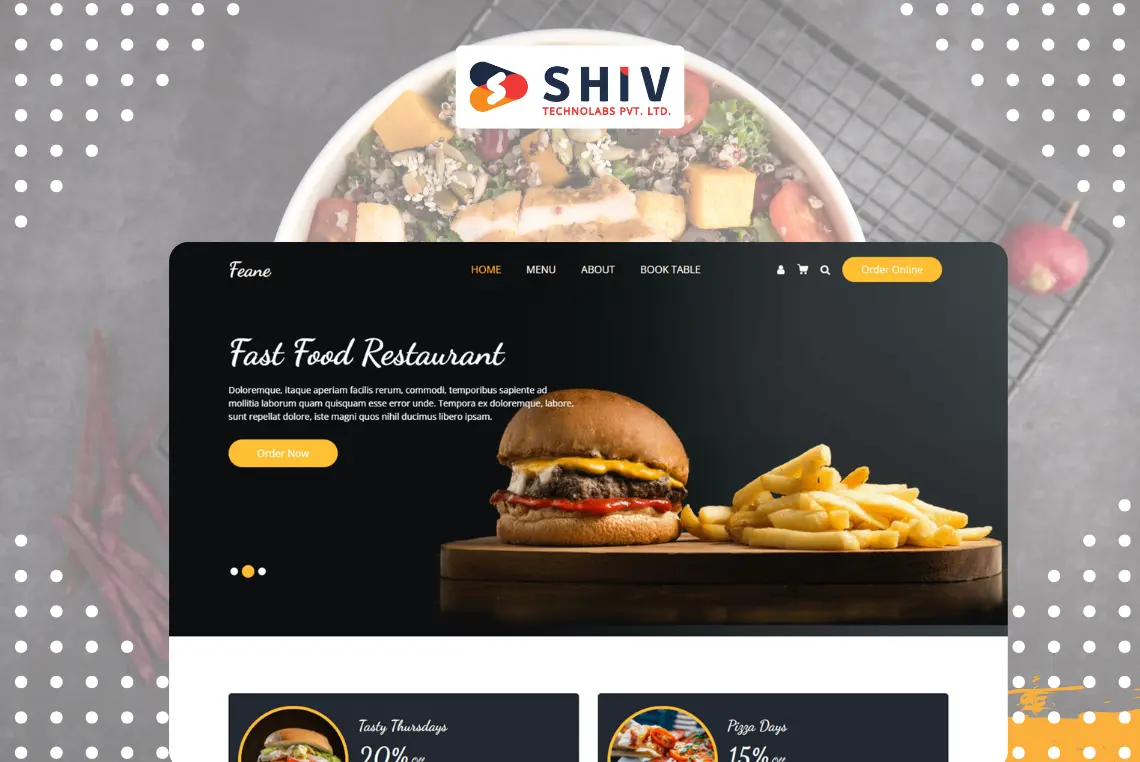Table of Contents
Flutter has emerged as a powerful framework for web app development, providing developers with the tools needed to create dynamic and responsive applications. Especially in Australia, where the tech industry is booming, using Flutter can give businesses a significant edge. This guide will walk you through the process of building a Flutter web app from scratch, tailored to the specific needs and market trends in Australia. By the end of this guide, you will have a solid understanding of the steps involved in Flutter web app development and the unique advantages it offers for Australian businesses.
Understanding Flutter for Web
Flutter is an open-source framework developed by Google that allows developers to create natively compiled applications for mobile, web, and desktop from a single codebase. This makes it an ideal choice for web app development, offering a smooth transition between platforms. Flutter’s flexibility and performance have made it a popular choice among developers worldwide, and it is particularly favored by top flutter development companies in Australia. By using Flutter, developers can build high-quality web apps that are both fast and visually appealing, catering to the diverse needs of Australian businesses.
# What is Flutter?

Flutter is a UI toolkit that provides a single codebase for creating applications that run on multiple platforms. It uses the Dart programming language and features a rich set of pre-designed widgets that make it easy to create attractive and functional user interfaces. Flutter’s architecture is based on reactive programming, which allows for dynamic and responsive app designs. For web app development, Flutter offers the ability to compile to JavaScript, enabling smooth performance in web browsers. The framework’s hot-reload feature significantly speeds up the development process, allowing developers to see changes in real-time without restarting the application.
# Key Features and Benefits of Flutter for Web
One of the key features of Flutter is its rich set of customizable widgets, which allow developers to create visually stunning applications. Flutter’s widget-based architecture ensures that the app’s UI is both flexible and highly performant. Another significant benefit is Flutter’s ability to deliver consistent performance across different platforms, which is crucial for maintaining user engagement.
Additionally, Flutter’s hot-reload feature enhances productivity by allowing developers to instantly view changes made to the code. For Australian businesses, Flutter’s cost-effectiveness and efficiency make it a top choice for web app development, allowing them to stay competitive in the fast-paced digital market.
Setting Up Your Development Environment

Before you can start building a Flutter web app, you need to set up your development environment. This involves ensuring that your system meets the necessary requirements and installing the Flutter SDK. You will also need to choose an integrated development environment (IDE) that suits your workflow, with popular options being VS Code and Android Studio. Configuring Flutter for web development involves a few additional steps, such as enabling web support and ensuring your tools are up to date. This setup process is essential for creating a smooth and efficient development experience.
# System Requirements
To develop Flutter web apps, your system needs to meet certain requirements. These include a modern operating system (Windows, macOS, or Linux), sufficient RAM (at least 8GB recommended), and adequate storage space for the Flutter SDK and project files. Additionally, a stable internet connection is necessary for downloading dependencies and updates. Ensuring your system meets these requirements will help prevent issues during the development process and provide a smoother experience.
# Installing Flutter SDK
The first step in setting up your development environment is to install the Flutter SDK. This involves downloading the SDK from the official Flutter website and extracting it to a directory on your system. After installing the SDK, you need to add the Flutter tool to your system’s PATH. This allows you to run Flutter commands from your terminal. Verifying the installation by running flutter doctor will ensure that all necessary dependencies are installed and correctly configured.
# Setting Up an Integrated Development Environment (IDE)
Choosing the right IDE is crucial for a productive development process. VS Code and Android Studio are popular choices among Flutter developers. VS Code is lightweight and highly customizable, while Android Studio offers a comprehensive set of tools for Flutter development. Installing Flutter and Dart plugins for your chosen IDE will provide additional functionalities and integrations, such as syntax highlighting, code completion, and debugging tools. Configuring your IDE correctly will streamline your workflow and enhance your development experience.
# Configuring Flutter for Web
After setting up the Flutter SDK and your IDE, the next step is to configure Flutter for web development. This involves enabling web support by running the flutter config –enable-web command. Ensuring that your tools are up to date is also essential, which can be done by running flutter upgrade. Once web support is enabled, you can create and run Flutter web projects directly from your IDE, allowing you to develop and test your web app efficiently.
Creating Your First Flutter Web Project
With your development environment set up, you can now create your first Flutter web project. This process involves initializing a new project, understanding its structure, and running the default web app. Familiarizing yourself with the project structure will help you organize your code and resources effectively as you build your app.
# Starting a New Flutter Web Project
To start a new Flutter web project, open your terminal and run the flutter create my_web_app command, replacing my_web_app with your desired project name. This command creates a new Flutter project with the necessary files and directories. Navigating to the project directory and opening it in your IDE will allow you to begin development. Running flutter run -d chrome will launch the default web app in your browser, giving you a starting point for your project.
# Understanding the Project Structure
A typical Flutter project consists of several directories and files, each serving a specific purpose. The lib directory contains your Dart code, while the web directory holds the HTML and JavaScript files needed for web deployment. The pubspec.yaml file is used to manage dependencies and project settings. Familiarizing yourself with the project structure will help you navigate and organize your code effectively, making the development process more manageable.
# Running the Default Flutter Web App
Running the default Flutter web app is a straightforward process. By executing flutter run -d chrome, you can launch the web app in your default browser. This command compiles the Dart code to JavaScript and serves it using a local development server. The default web app provides a basic template that you can modify and build upon, serving as a foundation for your project.
Also read : Maximizing User Satisfaction in Turkey with Custom Flutter Widgets
Designing the User Interface
Designing a user interface (UI) for your Flutter web app involves using Flutter’s rich set of widgets and implementing responsive design principles. A well-designed UI is crucial for providing a positive user experience, which is essential for the success of any web app. This section will guide you through the process of creating an attractive and functional UI.
# Using Flutter Widgets
Flutter’s widget-based architecture makes it easy to create complex and visually appealing UIs. Widgets are the building blocks of a Flutter app, and they come in various types, such as stateless and stateful widgets. By combining different widgets, you can create custom components that suit your app’s requirements. Flutter’s extensive library of pre-designed widgets allows you to build UIs quickly and efficiently, providing a high level of customization.
# Implementing Responsive Design
Responsive design is essential for ensuring that your web app looks and functions well on different devices and screen sizes. Flutter provides several tools and techniques for implementing responsive design, such as the MediaQuery class and the LayoutBuilder widget. These tools allow you to create flexible layouts that adapt to various screen dimensions, providing a consistent user experience across devices. By prioritizing responsive design, you can reach a wider audience and enhance user satisfaction.
# Best Practices for UI/UX in Australia
When designing the UI/UX of your Flutter web app, it’s important to consider the preferences and expectations of Australian users. This includes using clear and concise language, providing intuitive navigation, and ensuring accessibility for all users. Incorporating local design trends and cultural elements can also help make your app more appealing to the Australian market. Following these best practices will help you create a user-friendly and engaging web app.
Developing Core Features
Developing the core features of your Flutter web app involves managing state, fetching data from APIs, implementing navigation and routing, and handling forms and user input. These functionalities are essential for creating a fully functional and interactive web app.
# Managing State
State management is a crucial aspect of web app development with Flutter. There are several approaches to state management, including Provider and Riverpod. The Provider package is a popular choice for managing state in Flutter apps due to its simplicity and efficiency. Riverpod, on the other hand, offers more advanced features and greater flexibility. By choosing the right state management solution, you can ensure that your app’s state is handled efficiently and effectively.
# Fetching Data from APIs
Fetching data from APIs is a common requirement for web apps, allowing you to integrate external services and provide dynamic content. Flutter provides several tools for making HTTP requests, such as the http package and the dio package. These tools make it easy to fetch data from APIs and handle the responses. By implementing efficient data fetching mechanisms, you can enhance the functionality and performance of your web app.
# Implementing Navigation and Routing
Navigation and routing are essential for creating a smooth user experience in your web app. Flutter’s Navigator class and Route system provide a flexible and powerful way to manage navigation and routing. By defining routes and handling navigation events, you can create a smooth and intuitive user flow. Implementing efficient navigation and routing mechanisms will help users move through your app effortlessly.
# Handling Forms and User Input
Handling forms and user input is a key aspect of web app development with Flutter. Flutter provides several widgets for creating forms and capturing user input, such as TextFormField and DropdownButton. By validating user input and managing form submissions, you can ensure that your app handles user data securely and efficiently. Implementing effective form handling mechanisms is crucial for providing a smooth user experience.
Integrating Australian-Specific Features
To make your Flutter web app relevant to the Australian market, you may need to integrate Australian-specific features, such as localization, payment gateways, and mapping services. These features will help you cater to the unique needs of Australian users.
# Localization and Internationalization
Localization and internationalization are essential for making your web app accessible to users in different regions. Flutter provides several tools for implementing localization, such as the intl package. By localizing your app’s content, you can provide a more personalized experience for Australian users. This involves translating text, formatting dates and numbers, and handling different currencies. Implementing effective localization mechanisms will help you reach a wider audience in Australia.
# Payment Gateways and Financial Integrations
Integrating payment gateways and financial services is crucial for web apps that involve transactions. In Australia, popular payment gateways include PayPal, Stripe, and Afterpay. Flutter provides several packages for integrating these payment gateways, allowing you to handle payments securely and efficiently. By implementing reliable payment solutions, you can enhance the functionality and user experience of your web app.
# Mapping and Location Services
Mapping and location services are important for web apps that involve location-based features. Flutter provides several tools for integrating mapping services, such as the google_maps_flutter package. By incorporating maps and location services, you can provide users with accurate and relevant information based on their location. Implementing effective mapping and location mechanisms will enhance the usability and functionality of your web app.
Also read : Why Flutter is an Excellent Choice for Mobile App Development in UAE
Testing Your Flutter Web App
Testing is a crucial part of the development process, ensuring that your web app functions correctly and meets user expectations. This involves writing unit tests, widget tests, and integration tests to cover different aspects of your app.
# Writing Unit Tests
Unit tests are used to test individual components of your app in isolation. Flutter provides the test package for writing unit tests. By creating unit tests for your app’s logic and functionality, you can ensure that each component works as expected. Writing comprehensive unit tests will help you identify and fix issues early in the development process.
# Widget and Integration Testing
Widget tests and integration tests are used to test the UI and interactions of your app. Flutter provides the flutter_test package for writing these tests. Widget tests focus on individual widgets, while integration tests cover the entire app’s functionality. By writing thorough widget and integration tests, you can ensure that your app provides a consistent and reliable user experience.
# Using Testing Tools and Libraries
There are several tools and libraries available for testing Flutter web apps, such as mockito for mocking dependencies and flutter_driver for running automated tests. These tools enhance the testing process by providing additional functionalities and integrations. By using the right testing tools and libraries, you can improve the quality and reliability of your web app.
Improving Performance
Improving the performance of your Flutter web app is essential for providing a smooth and responsive user experience. This involves following best practices for web performance, minimizing load times, and managing state efficiently.
# Best Practices for Web Performance
Following best practices for web performance is crucial for creating a fast and efficient web app. This includes optimizing images, reducing the size of JavaScript files, and using lazy loading for resources. By implementing these practices, you can enhance the performance and user experience of your web app.
# Minimizing Load Times
Minimizing load times is essential for keeping users engaged and reducing bounce rates. This involves optimizing the app’s assets, using caching strategies, and implementing efficient data fetching mechanisms. By minimizing load times, you can improve the overall performance and user satisfaction of your web app.
# Efficient State Management
Efficient state management is crucial for maintaining the performance and responsiveness of your web app. By using state management solutions like Provider or Riverpod, you can manage your app’s state efficiently and effectively. Implementing efficient state management mechanisms will help you create a high-performing and scalable web app.
Deploying Your Flutter Web App
Deploying your Flutter web app involves preparing it for deployment, choosing a hosting provider, and deploying it to the web. This process is essential for making your app accessible to users.
# Preparing for Deployment
Before deploying your web app, you need to prepare it for deployment. This involves building the app for production by running the flutter build web command. This command compiles the Dart code to optimized JavaScript files, reducing the app’s size and improving its performance. Ensuring that your app is ready for deployment will help you avoid issues during the deployment process.
# Choosing a Hosting Provider in Australia
Choosing the right hosting provider is crucial for ensuring that your web app is accessible and performs well. There are several local and cloud hosting options available in Australia, such as AWS, Google Cloud, and local providers like Digital Pacific. By selecting a reliable hosting provider, you can ensure that your app remains available and responsive to users.
# Deploying to the Web
Deploying your Flutter web app involves uploading the built files to your hosting provider and configuring the necessary settings. This process varies depending on the hosting provider you choose. Once deployed, your web app will be accessible to users through a web browser. Ensuring a smooth deployment process will help you make your app available to users quickly and efficiently.
Maintaining and Updating Your App
Maintaining and updating your Flutter web app is essential for keeping it relevant and functional. This involves regular updates and bug fixes, monitoring and analytics, and gathering user feedback for continuous improvement.
# Regular Updates and Bug Fixes
Regular updates and bug fixes are crucial for maintaining the functionality and security of your web app. This involves fixing issues, adding new features, and keeping dependencies up to date. By regularly updating your app, you can ensure that it remains reliable and meets user expectations.
# Monitoring and Analytics
Monitoring and analytics are essential for understanding how users interact with your app and identifying areas for improvement. Tools like Google Analytics and Firebase provide insights into user behavior and app performance. By monitoring your app’s metrics, you can make informed decisions for future updates and enhancements.
# User Feedback and Continuous Improvement
Gathering user feedback is crucial for understanding their needs and preferences. This can be done through surveys, reviews, and direct interactions. By incorporating user feedback into your development process, you can continuously improve your app and provide a better user experience. Ensuring that your app meets user expectations will help you maintain a loyal user base and achieve long-term success.
Conclusion
In conclusion, developing a Flutter web app in Australia involves several steps, from setting up your development environment to maintaining and updating your app. By following this guide, you can create a high-quality web app that meets the needs of Australian users and takes advantage of Flutter’s powerful features.
Shiv Technolabs is a leading Flutter development company that specializes in creating innovative and high-performing web apps. Our team of experienced Flutter developers is dedicated to delivering top-notch solutions that drive success for businesses in Australia and beyond. Whether you are looking to build a new web app or enhance an existing one, Shiv Technolabs has the expertise and resources to help you achieve your goals.



















